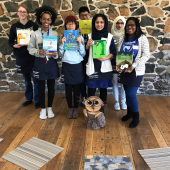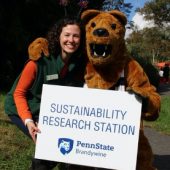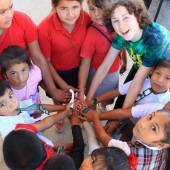
Abstract: A partnership between a university and local arboretum was expanded to include the campus library as a collaborator. Instead of having sustainability-themed programming between the two institutions focus on just the environmental components of the Sustainable Development Goals (SDGs), a library brings attention to literacy and information access across all aspects of the partnership. We share two public programs held between our university and an arboretum with strong involvement by the library in the development and execution stages, thereby increasing the connections across the SDGs and progress towards the 2030 agenda.
Continue Reading
Abstract: In Fall 2017, Penn State Brandywine kicked off an initiative titled Sustainovation, emphasizing programming and community collaborations through sustainability and innovation. The campus identified Tyler Arboretum as a community partner to work with to assist in advancing their education and outreach goals. Students from across the campus came together at the beginning of the semester for an initial meeting to be introduced to the United Nations Sustainable Development Goals (SDGs), to meet the community partner and to hear about the semester project of adding sustainability education to the arboretum’s fall festival Pumpkin Days. In addition, a validated survey from Biasutti & Frate (2017) was given to the students to define their attitudes towards sustainable development before working with this partner and the project. The survey addresses four sustainability constructs of Environment, Economy, Society, and Education. At the end of the semester, the same survey was given to student participants in this Sustainovation project for Tyler Arboretum. Aggregate data show that there is a statistically significant difference in student attitudes at a minimum 90% confidence level (t-test) for eight of the twenty survey statements in the constructs of Environment, Economy, and Society.
Continue ReadingArt-science intersections are a powerful means to inspire creative thinking in our future scientists, engineers, and citizens, which will allow them to imagine and build a sustainable world. Coupled to active learning and collaboration in science education, art can be a means to evoke deep meaning in abstract concepts such as Planetary Boundaries (PB). Relating PB to an individual’s choices and actions makes these concepts more tangible. As our nation strives to produce more science and engineering majors, we see an emphasis to recruit students to these fields early in their education, but this education does not always inspire creativity or encourage students to use their skills to create a sustainable future. This is particularly true in underrepresented, less privileged populations, where students see a career in science or technology as a means to live a more comfortable life—which can be very resource intensive on our planet. Through our undergraduate research program at Pasadena City College, we translate our research in sustainable materials into lessons to teach underrepresented middle school and high school students about sustainability. Hands-on classroom experiments focused on sustainability and renewable energy drive in-depth discussions relating PB to each student’s actions within their community. Outreach to underrepresented populations has stimulated interest in sustainability and careers in which STEM degrees can be applied to ‘green’ urban areas and make individuals aware of how their choices can impact the environment. Sustainability education is therefore an opportunity to promote diversity in the STEM workforce. Importantly, these outreach efforts have also greatly impacted the community college students who design and carry them out.
Continue Reading
Imagine a world where people hold the highest standards for collaboration, understanding, and mutual respect. Imagine a world where people are engaged and hold a deep commitment to creating genuine, just, and mutually-empowering beneficial relationships. Imagine a world where people have the ability to connect across cultures, appreciate, and deeply listen to different perspectives, understand complex systems – and how we all fit into them – and together co-create solutions to the most daunting of global challenges. Imagine a community of people bringing forward energy and a sense of possibility, and stepping up to create the world we want to live in.
Continue Reading